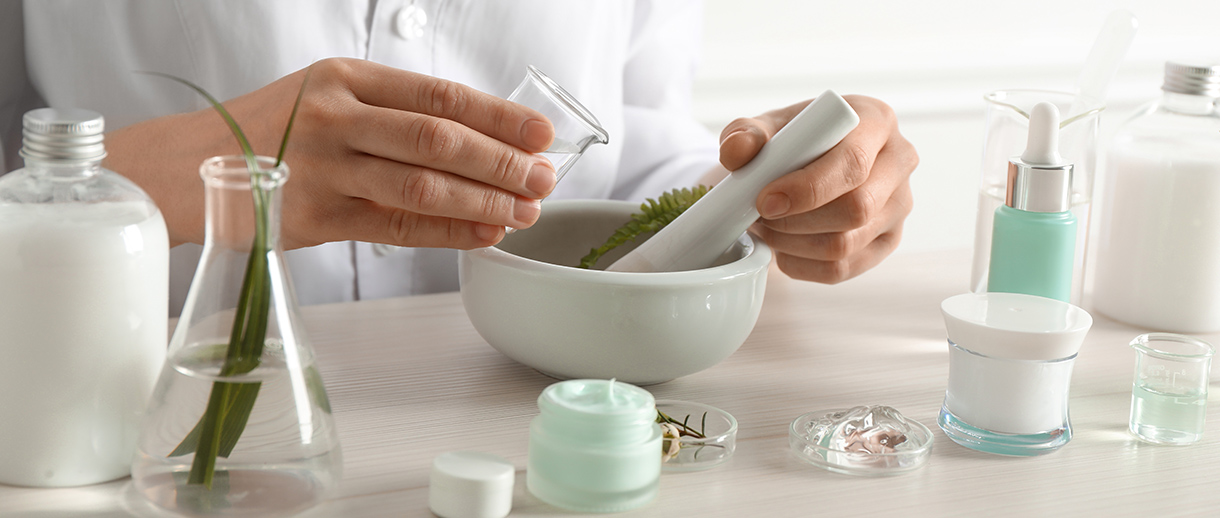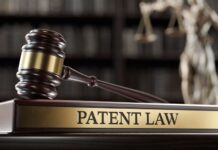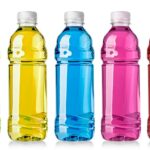
Cosmetic compositions and methods, like any other inventions, are expected to meet the three step requirement of patentability in India before being granted protection under law, i.e., the invention must meet the criteria of “Novelty”, “Inventive step” and “Industrial Application”. The invention should also not fall under the list of exceptions contained in Section 3 of the Patents Act, 1970 (“the Act”), and related provisions.
Cosmetic Compositions
For patentability of cosmetic compositions, in addition to being novel and inventive, typically, the composition must also steer clear of the exceptions contained in Sections 3(d), 3(e) and 3(p) of the Act.
i. Section 3(d)
Section 3(d) bars from patentability the mere discovery of a new form of a known substance which does not result in the enhancement of the known efficacy of that substance or the mere discovery of any new property or new use for a known substance.
In IN742/KOLNP/2012, the application relating to vanillin derivatives for use in cosmetic compositions was objected to under this provision. The applicant was able to address objections by demonstrating that the claimed compound has better preservation properties and efficacy over prior known vanillin.
ii. Section 3(e)
Section 3(e) bars from patentability a mere admixture which results only in the aggregation of the properties of the components. In other words, Section 3(e) requires that in a composition, the components must result in a synergistic effect.
According to paragraph 10.16 of the “Guidelines for examination of patent applications in the field of Pharmaceuticals”, in a composition if the functional interaction between the features achieves a combined technical effect which is greater than the sum of the technical effects of the individual features, it indicates that such a composition is more than a mere aggregation of the features.
In the Indian Patent Application (IPA) 201827046903 for a method and cosmetic composition for enhanced transdermal delivery of alkyl substituted resorcinol, the Indian Patent Office (“IPO”) objected to patentability under Section 3(e). The IPO allowed the applicant’s submissions that a pyridine compound of formula I or formula II aid the transdermal delivery of an alkyl substituted resorcinol when present together in a cosmetic composition. Additionally, submitted data showed that a combination of 4-hexyl resorcinol and picolinamide in a certain amount provides 13% inhibition in melanin synthesis as compared to respective controls which showed 3% inhibition and 1% inhibition.
iii. Section 3(p)
Section 3(p) bars from patentability traditional knowledge or an invention that is an aggregation or duplication of known properties of traditionally known component(s).
The patent application IN728/MUM/2015 relating to an ester of nicotinic acid or its derivatives, sourced from a vegetable oil, was refused under Section 3(p). The IPO took the view that the effect of the claimed invention is due to coconut oil, which is traditionally known for skin treatment. The IPO relied on experimental data submitted with the application to arrive at this conclusion. The data experiment involved the application of ethyl nicotinate on one hand and coconut ester of ethyl nicotinate of the claimed invention on the other hand. The hand on which ethyl nicotinate was applied turned red in colour, while the other hand did not show any such red colour, thus confirming the non-irritant property of the coconut ester of ethyl nicotinate.
IN161/KOL/2011 relating to a skin care composition comprising methanolic extract from aerial parts of Tephrosia villosa as an active ingredient, was also refused under Section 3(p), on grounds that using Tephrosia villosa for skin care is well known and traditionally obvious.
Cosmetic Treatments
Patent applications for cosmetic treatments tend to encounter objections under Section 3(i) of the Act.
i. Section 3(i)
Section 3 (i) bars from patentability any process for the medicinal, surgical, curative, prophylactic, diagnostic, therapeutic or other treatment of human beings or any process for a similar treatment of animals to render them free of disease or to increase their economic value or that of their product.
The Manual of Patent Office Practice and Procedure, Version 3.0, in paragraph 09.03.05.08 and the “Guidelines for Examination of Biotechnology Applications for Patents”, in paragraph 15(i), clarify that cosmetic treatments are excluded under Section 3(i) and “applications of substances to the body for purely cosmetic purposes is not therapy,” and are hence excluded from the scope of Section 3(i).
To understand the ambit of “purely cosmetic” purposes, IN 201917045923 is an illustrative patent application, which relates to computer-assisted colorimetric make up method for camouflaging skin color deviations. The application was objected to under Section 3(i), on grounds that camouflaging a tonal imperfection falls within the ambit of Section 3(i). The IPO accepted the applicant’s arguments that the invention was for a method of selecting and precisely depositing a pigmented cosmetic composition comprising opacifying particles onto human skin to camouflage tonal imperfections, and that the term “tonal imperfection” does not relate to any disease. Accordingly, the deposition of the pigmented cosmetic composition of the invention is purely cosmetic and does not cure any disease in any way.
On the other hand, IN1376/DELNP/2007 relating to a method of modifying eye colour was refused by the IPO, which concluded that the claimed method of modifying eye colour involves forming annular channel in human eye by surgical blade or laser technique and slitting the cornea of the eye is a surgical method as it needs significant physical intervention of a highly trained person. The IPO also considered the applicant’s arguments that the claimed invention is not provided to treat human beings to render them disease-free but is only a cosmetic method to colour the eye such that people with insufficient pigment in the iris are not prone to any disease related to eyes; and that the method is merely a preventive method to shield the eye from harmful radiation at a later stage. However, the IPO noted that, even with this argument, the claims would attract Section 3(i) as the method comes under the ambit of prophylactic method, meaning a course of action that is used to prevent disease.
Thus, for a cosmetic treatment to be patentable, it must be demonstrated that the treatment does not result in curing or prevention of any disease or condition in any manner.
In IN4605/DELNP/2012 relating to hair implant anchors and systems and methods for use, while the claims relating to the hair implantation device were allowed, the claims relating to the hair implantation method were not allowed. The IPO was of the view that these claims indirectly relate to methods for treatment of the human or animal body by surgery or therapy.
Similarly, in IN1357/CHE/2009 relating to method and apparatus for stimulating a hair cell using an acoustic signal, the IPO allowed claims relating to the apparatus of stimulating a hair cell using acoustic stimulation, but not the claims relating to a method of stimulating a hair cell.
IN8930/DELNP/2008 relating to a method of cleaning an oral surface, was refused by the IPO, as it related to a curative and prophylactic process of treatment of oral cavities and hence, falls under Section 3(i).
In some cases relating to cosmetic treatments, applicants have attempted to address objections under Section 3(i) by introducing the limitation of “non-therapeutic” method in the preamble of claims. However, it was observed that such limitations may not be able to address Section 3(i) objection. For instance, in IN2562/MUMNP/2015, the applicant had amended the earlier objected method of treatment claims by adding the phrase, “non-therapeutic method”. However, the Controller maintained the objection, on grounds that “Section 3(i) is not limited only to therapeutic or surgical method etc. whereas other treatment of human beings or to increase their economic value or that of their products are also under section 3(i) as whole which also includes any process for the medicinal, surgical, curative, prophylactic diagnostic, therapeutic and the claimed subject matter is dermatological or cosmetic purpose, which applies on human skin.
Other approvals
Besides requirements under the Patents Act, an invention relating to cosmetic compositions or methods may be required to comply with the Biological Diversity Act, 2002 (“the BD Act”).
Under the BD Act, any persons/entities filing a patent application anywhere in the world, for any invention based on a biological resource obtained from India, must obtain appropriate approvals. The approval must be obtained from the National Biodiversity Authority (“NBA”) and may be applied for and obtained after filing for a patent, but must be prior to the grant of a patent. The term “biological resources” means plants, animals, and micro-organisms or parts thereof, their genetic material, and by-products (excluding value-added products) with actual or potential use or value. The definition does not include human genetic material.
Thus, cosmetic compositions involving herbs and plant extracts would require approvals from the NBA.
In IN728/MUM/2015(supra), the IPO required the applicant to obtain an approval under the BD Act, since the invention used extracts of aerial parts of Tephrosia villosa. In response the applicant argued that the material is a value-added material and hence the BD Act was not applicable. The IPO rejected this argument and took the view that the material falls under the ambit of biological resources as per the BD Act.
Conclusion
The patentability of cosmetic compositions and treatments in India involves meeting requirements not just under the Patents Act, 1970, but also under the Biodiversity Act, 2002. Depending on the nature of the invention, different kinds of objections are likely to be encountered in the course of prosecuting a patent application. Careful drafting and claiming can help pre-empt objections under the Patents Act, whereas the use of herbs and plant material in such inventions would require additional administrative approvals from the Indian government. It is important to note that these approvals are required for all inventions using biological resources from India, regardless of where in the world the application is filed.
















